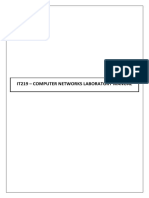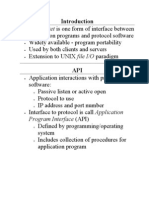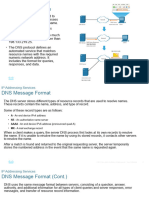0% found this document useful (0 votes)
32 views5 pagesCit 303 Lecture Note Part 2
Network programming involves writing software that communicates over a network, utilizing sockets as the primary means of data exchange. Sockets can be classified into network sockets for remote communication and Unix Domain sockets for local communication, with various configurations determining their behavior. The document also discusses socket implementation, configuration, client-server interactions, blocking versus non-blocking modes, and byte ordering issues in network communication.
Uploaded by
mohgydadoCopyright
© © All Rights Reserved
We take content rights seriously. If you suspect this is your content, claim it here.
Available Formats
Download as PDF, TXT or read online on Scribd
0% found this document useful (0 votes)
32 views5 pagesCit 303 Lecture Note Part 2
Network programming involves writing software that communicates over a network, utilizing sockets as the primary means of data exchange. Sockets can be classified into network sockets for remote communication and Unix Domain sockets for local communication, with various configurations determining their behavior. The document also discusses socket implementation, configuration, client-server interactions, blocking versus non-blocking modes, and byte ordering issues in network communication.
Uploaded by
mohgydadoCopyright
© © All Rights Reserved
We take content rights seriously. If you suspect this is your content, claim it here.
Available Formats
Download as PDF, TXT or read online on Scribd
/ 5















































































